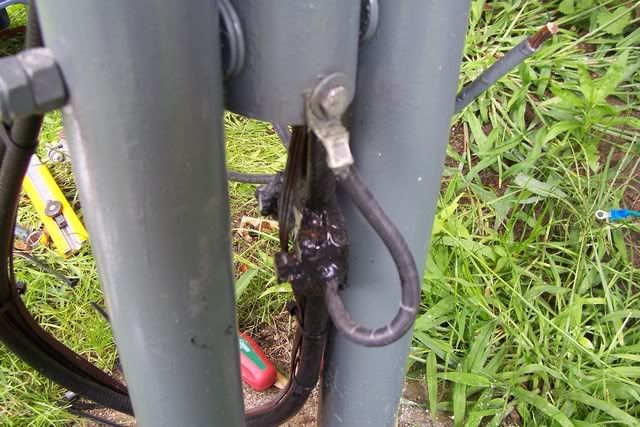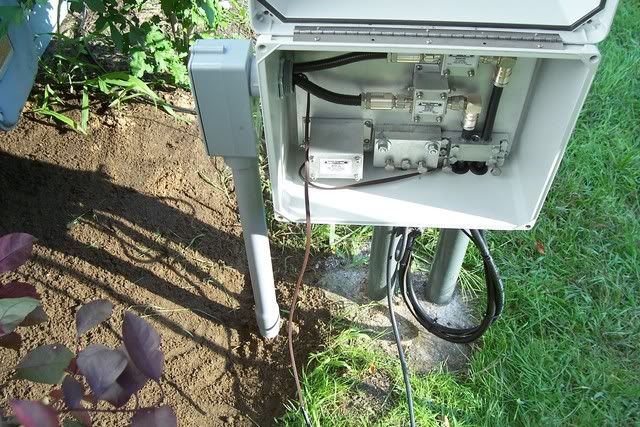I've searched rr.com, but couldn't find anything similar. I'm going to install an outside antenna for my ATCSMon server. The PC and radio will be located in my library on the second story of our house. The LMR-400 coax will come in to the house through the soffit vent, about 8 feet above ground. I'm planning on grounding the coax's braid as well as installing a gas tube discharge-type lightning/surge protector. Both of those will be in a waterproof box attached to the mast. I'm also going to ground the mast as well.
My question is what is the maximum length that my ground wire for my coax should be? I could mount the box up around the 8 foot level of my soffit, but my gut is telling me that its too high and it should be closer to the ground.
What do y'all think?
Thanks,
Warren
My question is what is the maximum length that my ground wire for my coax should be? I could mount the box up around the 8 foot level of my soffit, but my gut is telling me that its too high and it should be closer to the ground.
What do y'all think?
Thanks,
Warren




